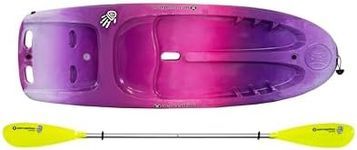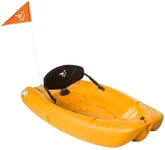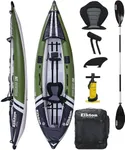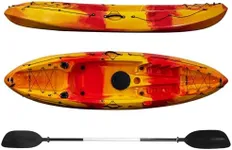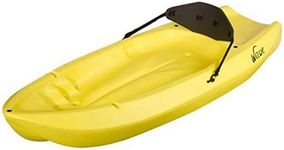Buying Guide for the Best Kayak For Kids
Choosing the right kayak for kids involves considering several factors to ensure safety, comfort, and enjoyment. It's important to select a kayak that matches the child's size, skill level, and the type of water they will be paddling in. By understanding the key specifications, you can make an informed decision that will help your child have a positive kayaking experience.Size and Weight CapacityThe size and weight capacity of a kayak are crucial for ensuring that it is suitable for your child. A kayak that is too large or too small can be difficult to control and may not be safe. Generally, kids' kayaks are shorter and lighter than adult kayaks, making them easier to handle. Look for a kayak with a weight capacity that comfortably accommodates your child's weight, with some room for growth. This will ensure stability and ease of paddling.
MaterialKayaks are made from various materials, each with its own advantages. Common materials include plastic, fiberglass, and inflatable options. Plastic kayaks are durable and affordable, making them a good choice for kids who may be rough on their equipment. Fiberglass kayaks are lighter and more efficient in the water but can be more expensive and less durable. Inflatable kayaks are lightweight and easy to transport but may not be as durable as hard-shell options. Consider where and how often the kayak will be used to determine the best material for your child.
StabilityStability is a key factor in choosing a kayak for kids, as it affects their ability to stay upright and feel confident on the water. Wider kayaks tend to be more stable and are a good choice for beginners. As your child gains experience and confidence, they may prefer a narrower kayak that offers better speed and maneuverability. Assess your child's skill level and choose a kayak that provides the right balance of stability and performance.
WeightThe weight of the kayak is important for both transportation and handling on the water. A lighter kayak is easier for a child to carry and maneuver, both on land and in the water. However, very lightweight kayaks may be more susceptible to being blown around by the wind. Consider your child's strength and ability to handle the kayak when choosing the right weight.
ComfortComfort features such as seat design, footrests, and padding can make a big difference in your child's kayaking experience. Look for a kayak with an adjustable seat and footrests to accommodate your child's growth and ensure a comfortable fit. Padded seats and backrests can also enhance comfort, especially during longer paddling sessions. Ensuring your child is comfortable will help them enjoy their time on the water and encourage them to keep kayaking.
Safety FeaturesSafety is paramount when choosing a kayak for kids. Look for features such as grab handles, a stable design, and a bright color for visibility. Some kayaks also come with built-in flotation devices to help keep the kayak afloat if it capsizes. Additionally, ensure your child always wears a properly fitted life jacket while kayaking. Prioritizing safety features will give you peace of mind and help keep your child safe on the water.




